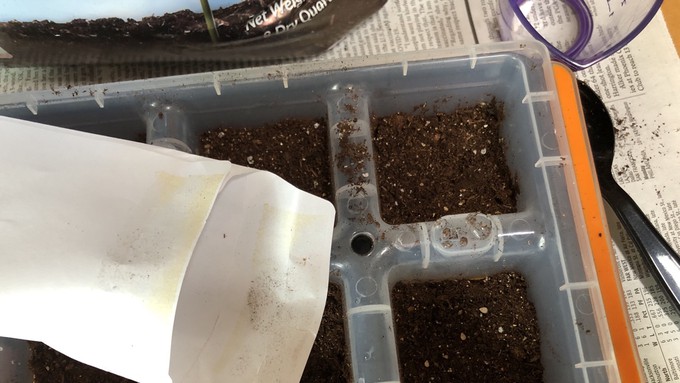
February ends on a wet and windy note

Since the weather's not conducive to being outdoors for long, it's a great time to get some (or more) tomato seeds started. Kathy Morrison
February is going out with a soggy roar.
Another wave of wintery weather is coming our way, pushed by strong winds.
According to the National Weather Service, expect some huge gusts on Monday – and maybe more fallen trees.
“Gusty winds will accompany the next storms tomorrow (through) Tuesday, but the strongest winds will be Monday,” the Sacramento NWS office tweeted Saturday. “Valley gusts up to 30-50 mph and mountain gusts up to 60-70 mph could cause downed trees and branches, localized power outages and difficult driving conditions.”
It won’t do much for gardeners, either – or our urban forest. Trees tend to lose their stability in soggy soil. Evergreens already wobbly after January’s storms could lose their roothold and topple over. Stay away from leaning trees or shrubs.
Besides the wind, more rain is in Sacramento’s forecast – which is a good thing. Downtown received almost an inch on Friday, bringing our total for February to 1.27 inches, but that’s still 2 inches below average. Normal for February: 3.59 inches.
After a drizzly Saturday, Sunday is expected to be wet with up to a half inch in Sacramento, says the weather service. Monday will see another half inch (or more) followed by additional showers on Tuesday.
Our yo-yo temperature pattern continues, too. The high on President’s Day Monday (Feb. 20) was 71 degrees, a record for that date; on Friday, it was 48. Sacramento also hit 71 on Feb. 12, with several days below normal in between those two peaks.
Our days this week will continue to be chilly – with highs mostly under 50 degrees. When the clouds finally clear midweek, the frost returns. The low in the wee hours of Thursday morning is expected to be 30 degrees with widespread frost.
All this cold and damp will put the brakes on our spring roll out. Protect tender transplants. Put off planting seed or setting out seedlings until soil warms.
* After this round of storms, feed spring-blooming shrubs and fall-planted perennials with slow-release fertilizer. Feed camellias after they bloom.
* Feed mature trees and shrubs after spring growth starts.
* Remove aphids from blooming bulbs with a strong spray of water or insecticidal soap.
* Fertilize strawberries and asparagus.
* Indoors, start peppers, tomatoes and eggplant from seed.
* It’s not too late to browse seed catalogs or websites and order for spring planting.
* Pot-up bareroot roses, berries, asparagus, rhubarb or other bareroot plants. The soil is too cold for good root development. Instead, soak bareroot plants overnight, then plant them in potting soil in black plastic pots lined with newsprint. In April or May, transplant them – rootball and all – into the garden.
Comments
0 comments have been posted.Sacramento Digs Gardening to your inbox.
Sites We Like
Garden Checklist for week of July 21
Your garden needs you!
* Keep your vegetable garden watered, mulched and weeded. Water before 8 a.m. to reduce the chance of fungal infection and to conserve moisture.
* Feed vegetable plants bone meal, rock phosphate or other fertilizers high in phosphate to stimulate more blooms and fruiting. (But wait until daily high temperatures drop out of the 100s.)
* Don’t let tomatoes wilt or dry out completely. Give tomatoes a deep watering two to three times a week.
* Harvest vegetables promptly to encourage plants to produce more. Squash especially tends to grow rapidly in hot weather. Keep an eye on zucchini.
* Pinch back chrysanthemums for bushy plants and more flowers in September.
* Remove spent flowers from roses, daylilies and other bloomers as they finish flowering.
* Pinch off blooms from basil so the plant will grow more leaves.
* Cut back lavender after flowering to promote a second bloom.
* It's not too late to add a splash of color. Plant petunias, snapdragons, zinnias and marigolds.
* From seed, plant corn, pumpkins, radishes, winter squash and sunflowers.